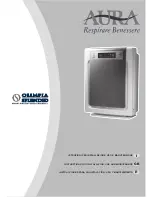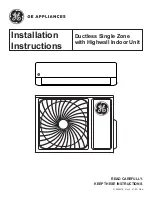
T H E S M A R T S O L U T I O N F O R E N E R G Y E F F I C I E N C Y
Rooftop (TRE) Series
R e v. : O c t o b e r 7 , 2 0 1 9
35
c l i m a t e m a s t e r. c o m
System Cleaning and Flushing
- Cleaning and flushing
the unit is the single most important step to ensure
proper start-up and continued efficient operation of the
system.
Follow the instructions below to properly clean and flush
the system:
1. Verify that electrical power to the units is
disconnected.
2. Install the system with the supply hose connected
directly to the return riser valve. Use a single length of
flexible hose.
3. Open all air vents. Fill the system with water. Do not
allow system to overflow. Bleed all air from the system.
Check the system for leaks and repair appropriately.
4. Verify that all strainers are in place. Start the pumps
and systematically check each vent to ensure that all
air is bled from the system.
5. Verify that makeup water is available. Adjust makeup
water appropriately to replace the air which was bled
from the system. Check and adjust the water/air level
in the expansion tank.
6. Set the boiler (when used) to raise the loop
temperature to approximately 85° F. Open a drain at
the lowest point in the system. Adjust the makeup
water replacement rate to equal the rate of bleed.
7. Refill the system and add trisodium phosphate in
a proportion of approximately one pound per 150
gallons of water. Reset the boiler (when used) to raise
the loop temperature to about 100°F.
8. Circulate the solution for a minimum of eight to
24 hours. At the end of this period, shut off the
circulating pump and drain the solution. Repeat
system cleaning if necessary.
9. When the cleaning process is complete, remove the
short-circuited hoses. Reconnect the hoses to the proper
supply and return the connections to each
of the Rooftop Units. Refill the system and bleed off
all air.
10. Add antifreeze to the system in climates where
ambient temperature falls below freezing, using the
proportion of antifreeze shown in Table 5. The
volume of antifreeze required will vary based on
outdoor design temperature.
11. Test the system pH with litmus paper. The system
water should be slightly alkaline ( pH 7.5 to 8.5).Add
chemicals as appropriate to maintain acidity levels.
12. When the system is successfully cleaned, flushed,
refilled and bled, check the main system panels,
safety cutouts, and alarms. Set the controls to
properly maintain loop temperatures.
Table 5: Percent Antifreeze Required By Volume
Start-Up Preparation
�
WARNING!
�
WARNING!
To prevent injury or death due to electrical shock
or contact with moving parts, open unit disconnect before
servicing unit.
�
CAUTION!
�
CAUTION!
To avoid possible damage to piping systems
constructed of plastic piping, DO NOT allow loop temperature
to exceed 115° F.
�
CAUTION!
�
�
CAUTION!
�
CAUTION!
Do Not use “Stop-Leak” or any similar chemical
agent in this system. Addition of these chemicals to the loop
water will foul the system and will inhibit unit operation.
INSTALLER CAUTION
! After making water connections on
units equipped with ClimaDry
®
, ensure the three union nuts
on the internal three-way valve are tight.
Antifreeze
Minimum Ambient Temperature
0°F
10°F
20°F
30°F
Methanol
25%
21%
16%
10%
Propylene Glycol
26%
23%
19%
9%
Ethylene Glycol
24%
20%
16%
12%
Note: The manufacturer strongly recommends all
piping connections, both internal and external to the
unit, be pressure tested by an appropriate method
prior to any finishing of the interior space or before
access to all connections is limited. Test pressure may
not exceed the maximum allowable pressure for the
unit and all components within the water system.
The manufacturer will not be responsible or liable
for damages from water leaks due to inadequate or
lack of a pressurized leak test, or damages caused
by exceeding the maximum pressure rating during
installation.










































